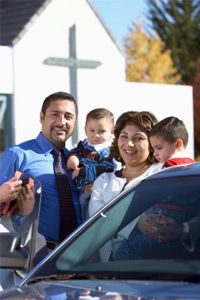Thieves, prostitutes, gamblers and drunks were all welcome at the sermons William Booth gave in a tent in the East End of London in the 1860s. In fact, they were some of the evangelical minister's most devout followers.
While other churches rejected them because of their sordid pasts, "The General" as Booth's congregation came to call him, preached salvation for all people, particularly the poor and "undesirables." As his "army" of followers grew into the thousands, one moved to Philadelphia in 1879, marking the birth of the Salvation Army in the United States [source: Salvation Army].
Advertisement
Today, the Salvation Army is one of the largest social services providers in the world, running homeless shelters, community centers, disaster relief programs and thrift stores in 118 countries.
It is also a faith-based organization -- one of thousands of charities in the U.S. whose missions are grounded in the belief that they have a religious obligation to help the poor and disadvantaged. They differ from secular charities like the Red Cross and United Way in that their call to serve is based on scripture from the New Testament, the Torah, or other religious texts.
Faith-based charities like the Salvation Army, Catholic Charities, Volunteers of America, Lutheran Social Services and Jewish Family & Children's Service provide a huge array of services to the nation's sick, elderly and poor.
They own hospitals and nursing homes, run mental health clinics, provide substance abuse treatment, build affordable housing and offer job training and after-school programs [source: Salmon].
In fact, 70 percent of the United States' food pantries are run by faith-based nonprofits, as are 27 percent of emergency shelters and halfway houses. Moreover, one out of every six child-care centers is run by a church or synagogue [source: De Vita].
Read on to find out how they get their funding.
Advertisement


